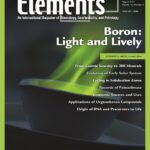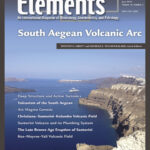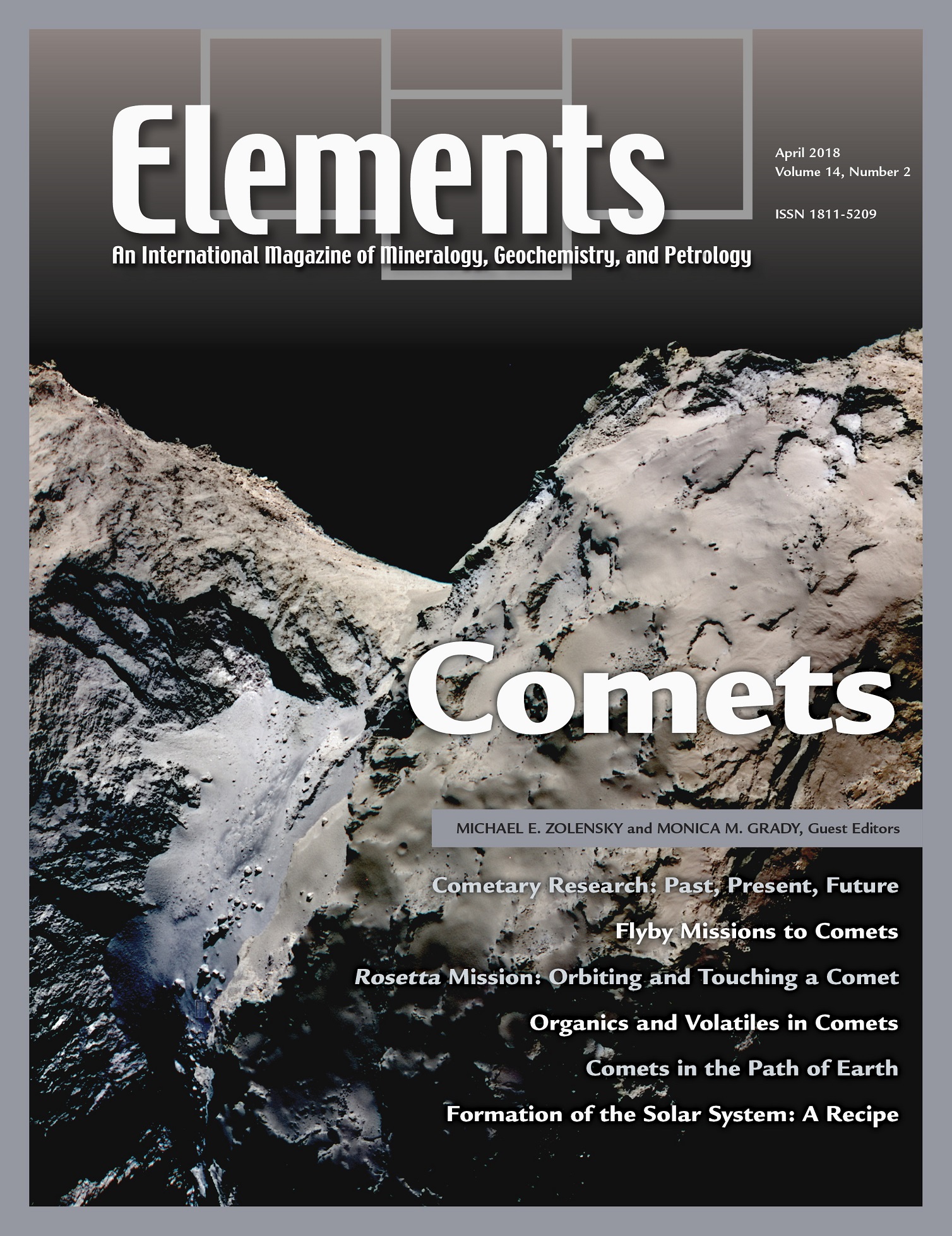
Boron: Light And Lively, August 2017, Vol. 13, No. 4
June 28, 2024
South Aegean Volcanic Arc, June 2019, Vol. 15, No. 3
June 28, 2024Comets, April 2018, Vol. 14, No. 2
$20.00
It is now possible, for the first time, to synthesize what has been learned regarding the mineralogy, geochemistry, and geology of comets from the Giotto, Vega, Stardust, Stardust NEXT, Deep Impact, and Rosetta missions to comets Halley, Wild 2, Borrelly, Tempel 1, and Churyumov– Gerasimenko. Articles in this issue describe the nature of cometary inorganic phases, volatiles, notable water, and organics.
Comets
April 2018, Vol. 14, No. 2
It is now possible, for the first time, to synthesize what has been learned regarding the mineralogy, geochemistry, and geology of comets from the Giotto, Vega, Stardust, Stardust NEXT, Deep Impact, and Rosetta missions to comets Halley, Wild 2, Borrelly, Tempel 1, and Churyumov– Gerasimenko. Articles in this issue describe the nature of cometary inorganic phases, volatiles, notable water, and organics. As shown in this issue, the relationships between the organics and the volatile inventories of terrestrial planets are critical. Processes that force comets to interact with other Solar System bodies are also discussed. For example, dust shed by comets enters the atmospheres of planets every day, observed as meteor showers that can be traced back to specific parent comets. One implication of this fact is that the enigmatic methane observed in the Martian atmosphere may arise from meteor showers of cometary material.
Why You’ll Love Elements Magazine:
- Expert Contributors: Articles written by renowned researchers in the field of geoscience.
- Engaging Content: Join a community of readers who are passionate about Elements.
- Exceptional Quality: Each issue is printed on high-quality paper with stunning visuals and detailed illustrations that bring complex scientific concepts to life.
Order your copy of the April 2018 issue of Elements magazine today and delve into comets.
Related products
-
Frontiers In Textural And Microgeochemical Analysis, August 2007, Vol. 3, No. 4
$20.00Recent advances have been made in high-resolution in situ methods to image mineral growth patterns, analyse compositional and isotopic zonation, and improve our ability to visualize, study, and model rock textures in three dimensions. These advances provide a significant step forward in the understanding of how rocks form and the history they can tell us.
-
Medical Mineralogy And Geochemistry, December 2007, Vol. 3, No. 6
$20.00Medical mineralogy and geochemistry is an emergent, highly interdisciplinary field concerned with both normal and pathological interactions between minerals or amorphous inorganic solids and biomolecules or cells within the human body, and the transport and fate of prions and protein toxins in the soil environment. Prior research has, appropriately, focused on the complex genetic and molecular biological aspects, but there is a growing recognition of the vital need for understanding the surface and bulk properties and reactivities, especially at the challenging nanoscale characteristic of biomacromolecules and biominerals.
-
Diamonds, March 2005, Vol. 1, No. 2
$20.00Diamond, the fascinating ultrahard mineral, is the focus of considerable interest and scientific research. Recent advances particularly relevant to geoscientists include: diamond as a recorder of Earth processes from the perspective of inclusions, chemistry, and conditions of formation; synthesis for research applications and processing to modify color and physical properties, important to diamond gems and anvils; the implications of nanodiamonds from meteorites.




